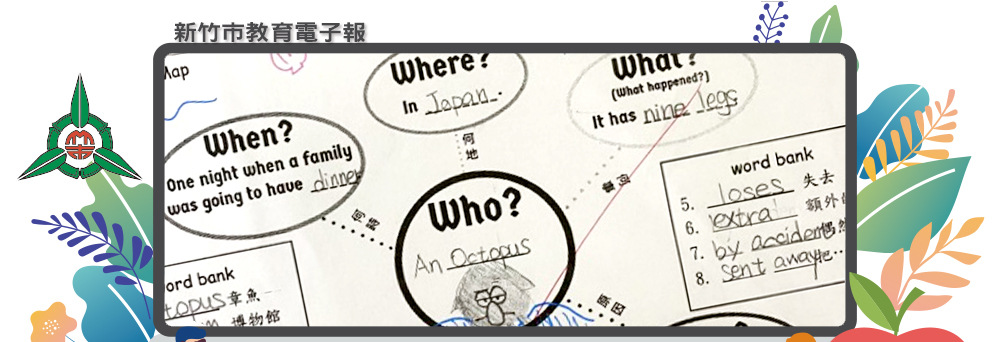Joann Wang / Dong Yuan Elementary School
This article aimed to improve students’ reading comprehension ability by using the mind map. Two related activities were clearly demonstrated in the following paragraphs and the students’ works as well.
The teachers used two articles as samples to help students create the mind maps. The article that we used in the first activity was written by a teacher in which of the content was similar to the students’ text book. The other one we used in the second activity was adapted from one of the articles in ICRT News LunchBox for kids.
Activity 1 (6 minutes)
In the first activity, the strategy of making a mind map was taught. Students must handle the principle of “ 5w1 h” ( who, when, why, where, what, how), and were asked to find out the key words in the article first, and then created their own mind map.
Steps:
1. Understand 5w1h.
2. Circle the key words.
3. Start from the main characters.
4. Find out what the characters in the article want and finish the mind map.

Notes:
It only took approximately 6 minutes for the students to finish the mind map because they’ve already handled the strategy and most of the words appeared in the content were what they were familiar with. I was surprised by this amazing effect that they can even beautify their mind map at such short notice.
Activity 2 (40 minutes)
The second article we chose from the ICRT News LunchBox was a little bit difficult for the students, so I divided it into three paragraphs and teach them first. At the end of each paragraph, I would ask students several questions and also had them simply describe the content for me. Besides, I also made a word bank and picked some words which might beyond their current recognition of the vocabulary for them to fill in. After finishing these teaching sequences, the students were told to finish the mind map and the quiz below.
 |
 |
Notes:
At first, some of the students felt passive when they got the worksheet, however, after they followed the teaching steps and finished the mind map themselves, they felt a sense of accomplishment. Besides, I thought it might be challenging for them to design a mind map for this article, so I gave them some hints to complete the mind map. This not only help the students who lose their motivation to read such a lengthy article, but also improve everyone’s reading comprehension ability.
Conclusion and Reflection:
A mind map is not only a useful tool for the students to figure out the gist of the article, but an effective method to help students improve their reading skills. During these two activities, I found out that making a mind map indeed increased students’ motivation and patience while reading an article. In the future, I would choose more articles that the students were interested in, and use the mind map as an aid to help them understand the content easily. |







